To view previous releases, select one from the dropdown box:
Currently displaying information released on: December, 2025
AVERAGE RETAIL PRICES, OCTOBER 2025
Year-over-year (October 2025 vs October 2024)
Over the last year (October 2025 vs October 2024), the consumer price index for all items in Nova Scotia excluding food increased by 2.5%. Food prices as a whole rose 2.7%. At the same time average weekly earnings across all Nova Scotia industries increased by 5.4%.
In the last year, the following products reported lower prices in Nova Scotia: beef rib cuts, chicken (thigh, drumsticks), soy milk, butter, bananas, limes, cucumber, mushrooms, salad greens, frozen french fries, frozen mixed vegetables, frozen pizza, crackers, pasta, white rice, cereal, white sugar, olive oil, baby food, peanut butter, mayonnaise, canned beans/lentils, canned corn, salsa, pasta sauce, laundry detergent.
The following products reported price growth that exceeded the gains in average weekly earnings: beef (striploin, ground), pork (loin, rib, shoulder), chicken (whole, breasts), bacon, wieners, salmon, shrimp, canned salmon, meatless burgers, pears, strawberries, cabbage, celery, lettuce (iceberg, romaine), peppers, squash, frozen broccoli, frozen spinach, frozen strawberries, cookies, wheat flour, apple juice, orange juice, coffee, tea, vegetable oil, canola oil, infant formula, canned soup, tofu, salad dressing, almonds, peanuts, deodorant, toothpaste.
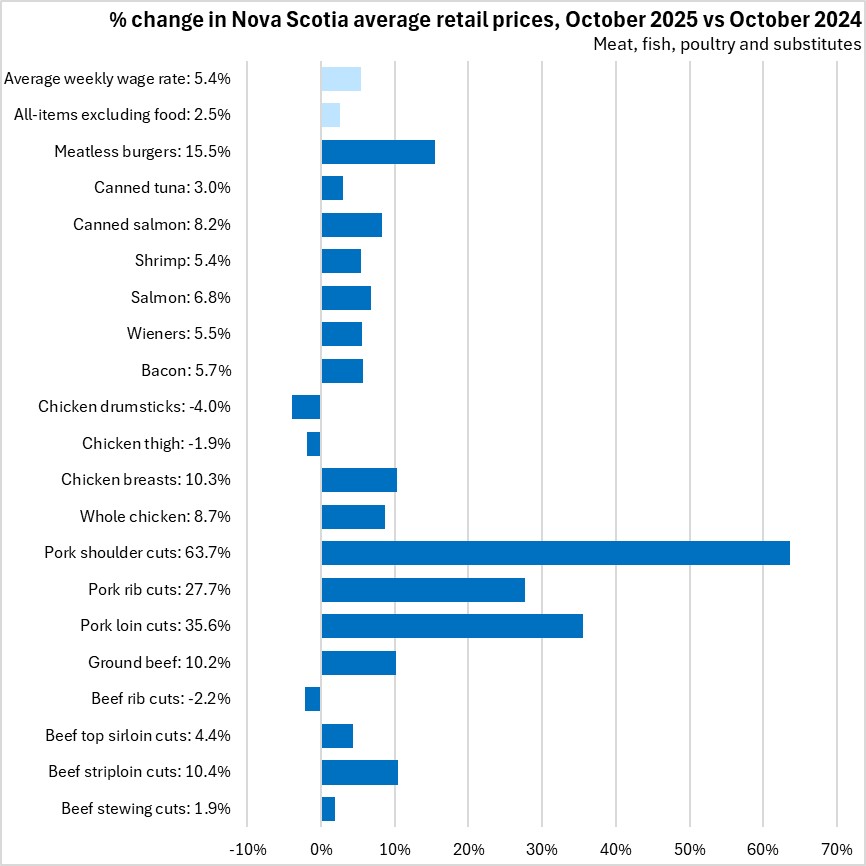
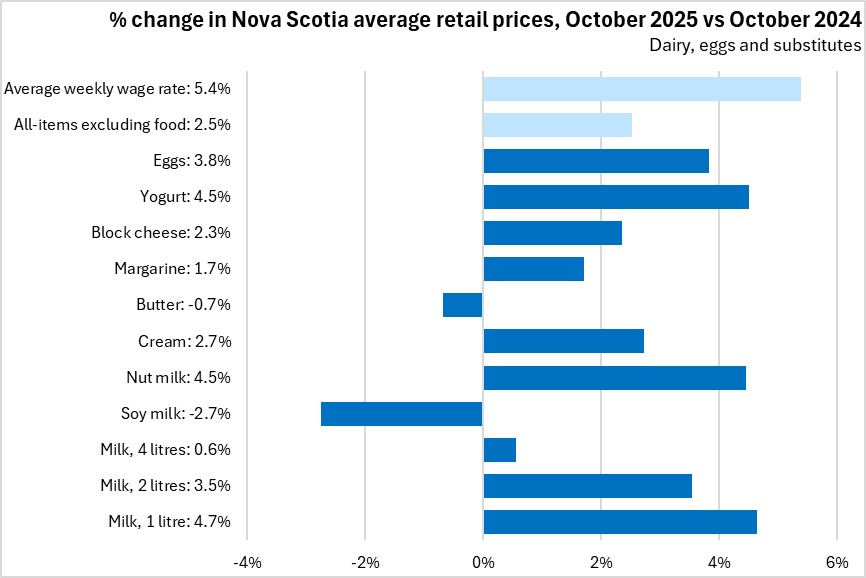
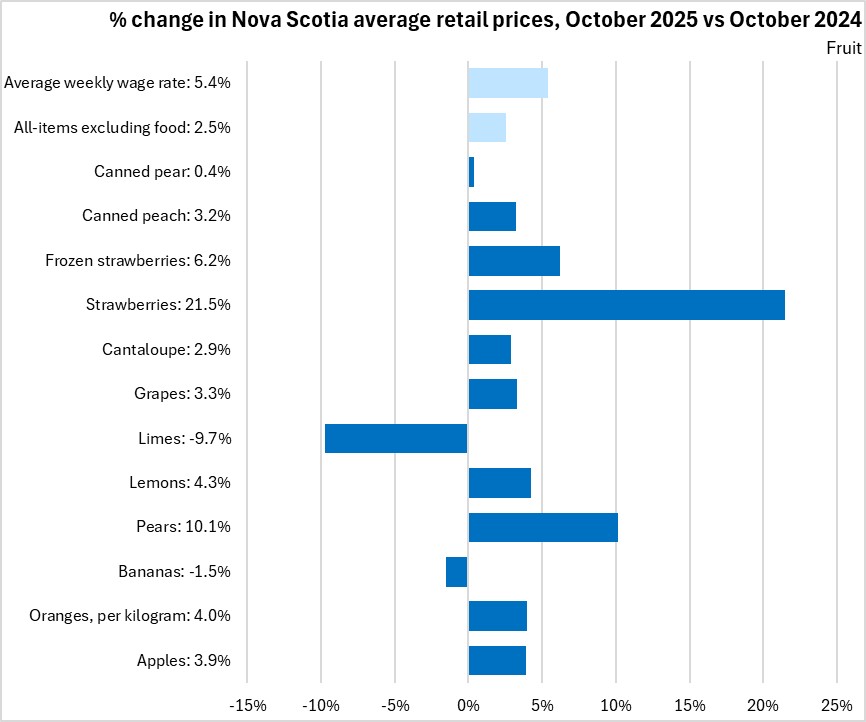
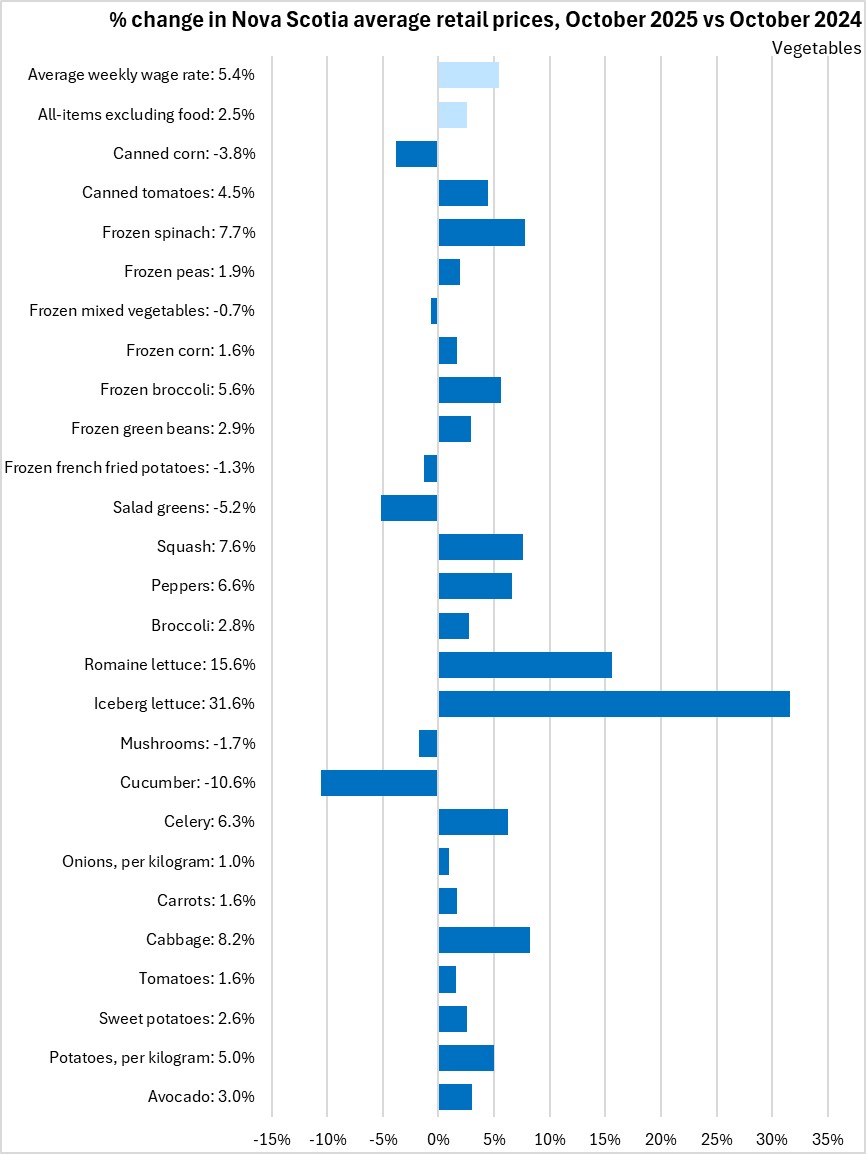
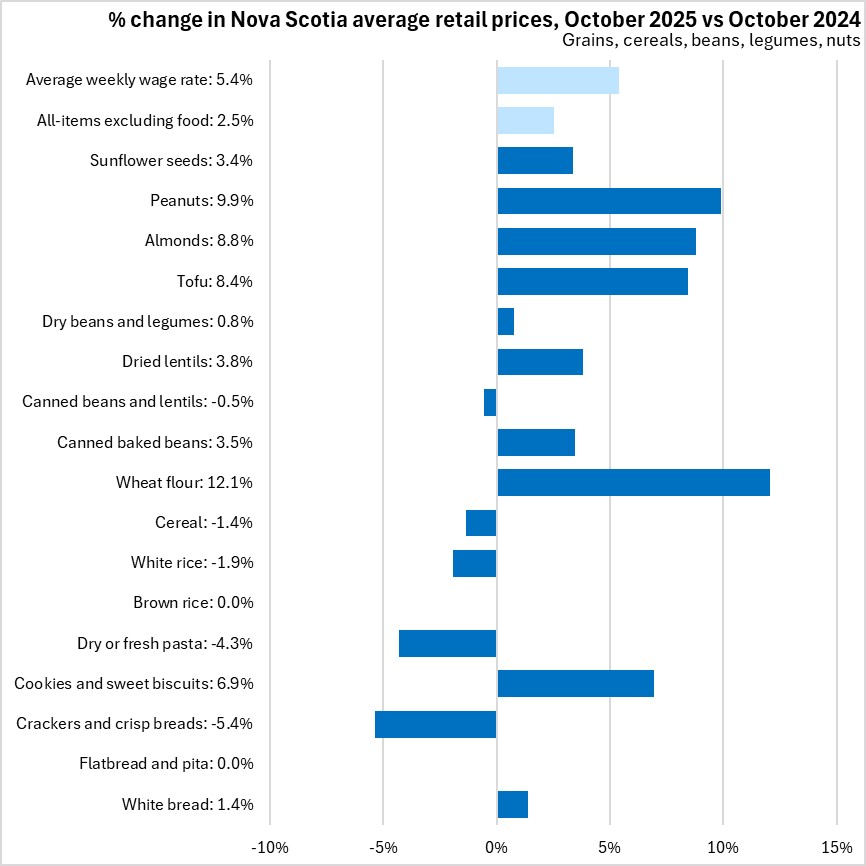
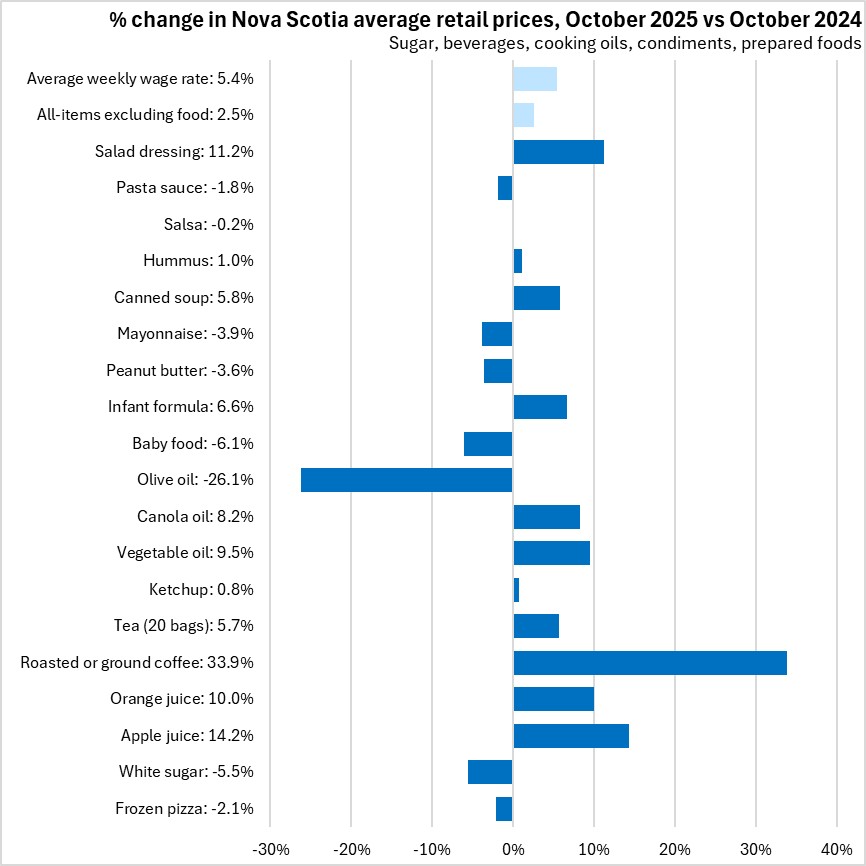
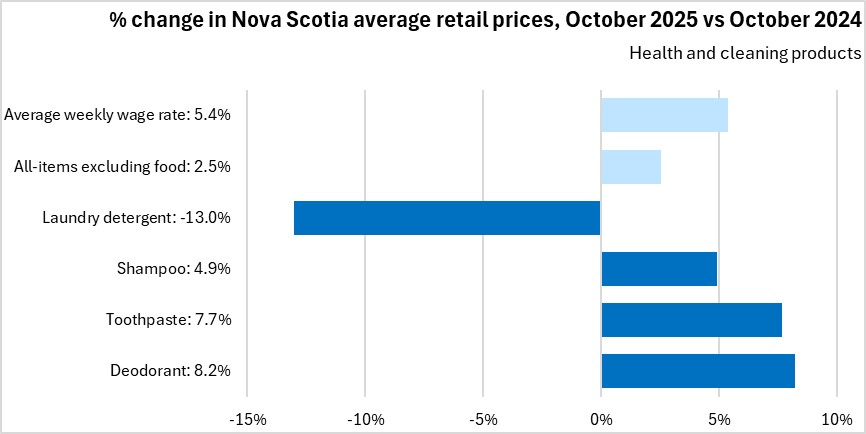
Nova Scotia prices relative to national average (October 2025)
Nova Scotia food prices were below national averages for the following products: beef (top sirloin, rib, ground), chicken thigh, bacon, shrimp, canned salmon, milk (2l), lemons, salad greens, white sugar, apple juice, baby food, infant formula, mayonnaise, pasta sauce, shampoo, laundry detergent.
Nova Scotia food prices were more than 10% higher than the national averages for the following products: pork (loin, rib, shoulder), chicken (breasts, drumsticks), canned tuna, cream, eggs, apples, oranges, bananas, pears, limes, grapes, cantaloupe, avocado, potatoes, tomatoes, onions, celery, cucumber, mushrooms, iceberg lettuce, broccoli, peppers, squash, flatbread, white rice, tea, vegetable oil, canola oil, olive oil, canned baked beans, canned beans/lentils, dried lentils
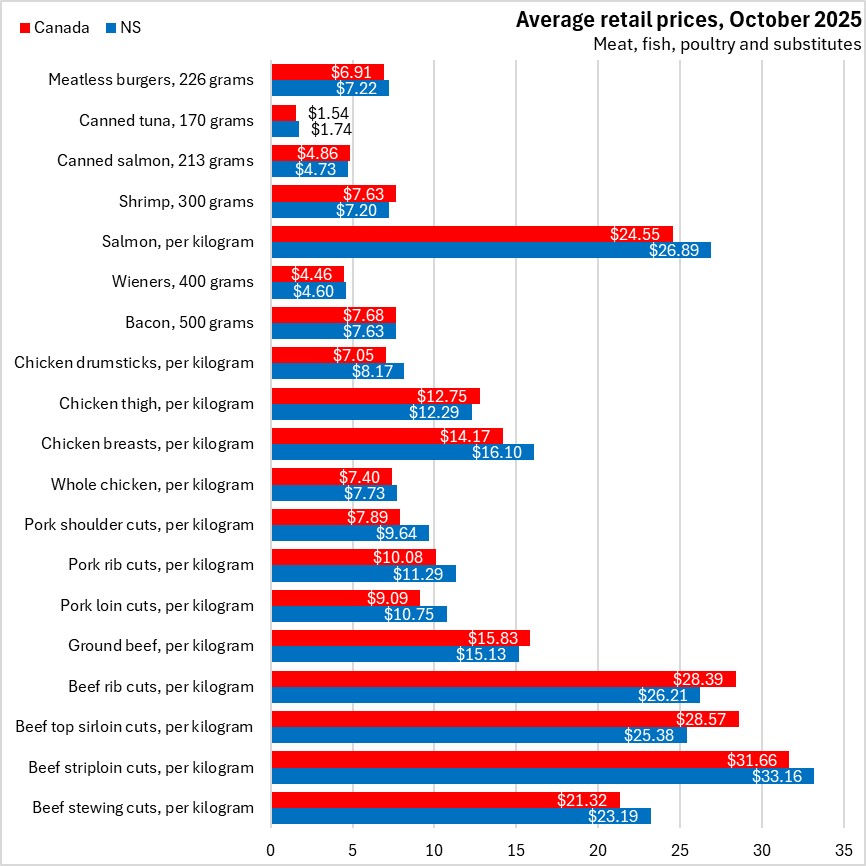
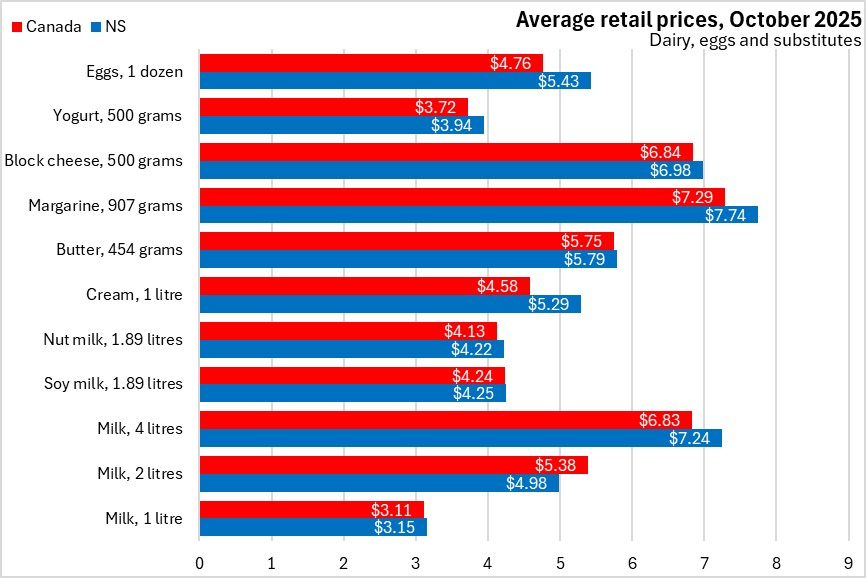
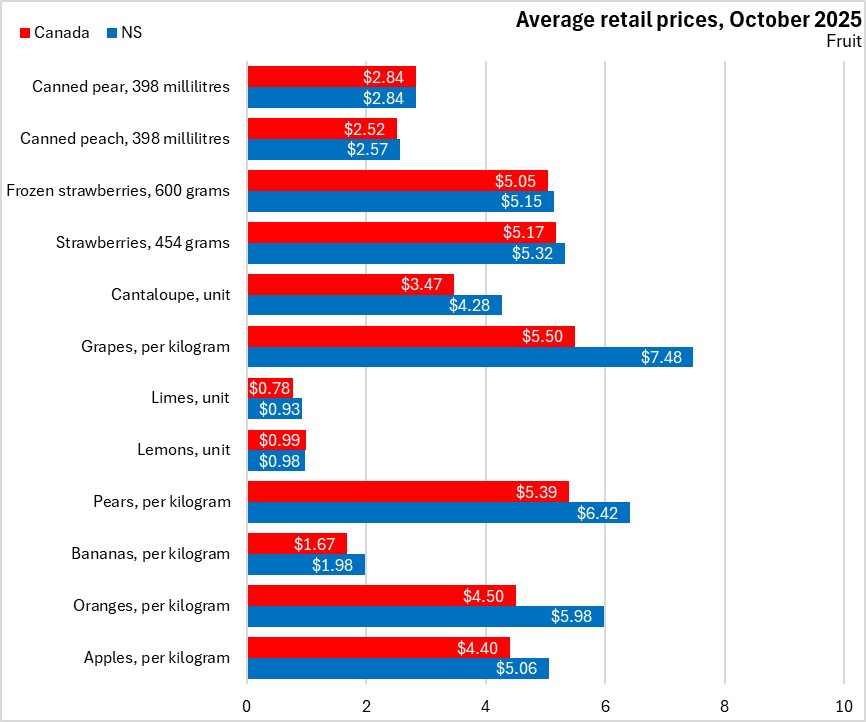
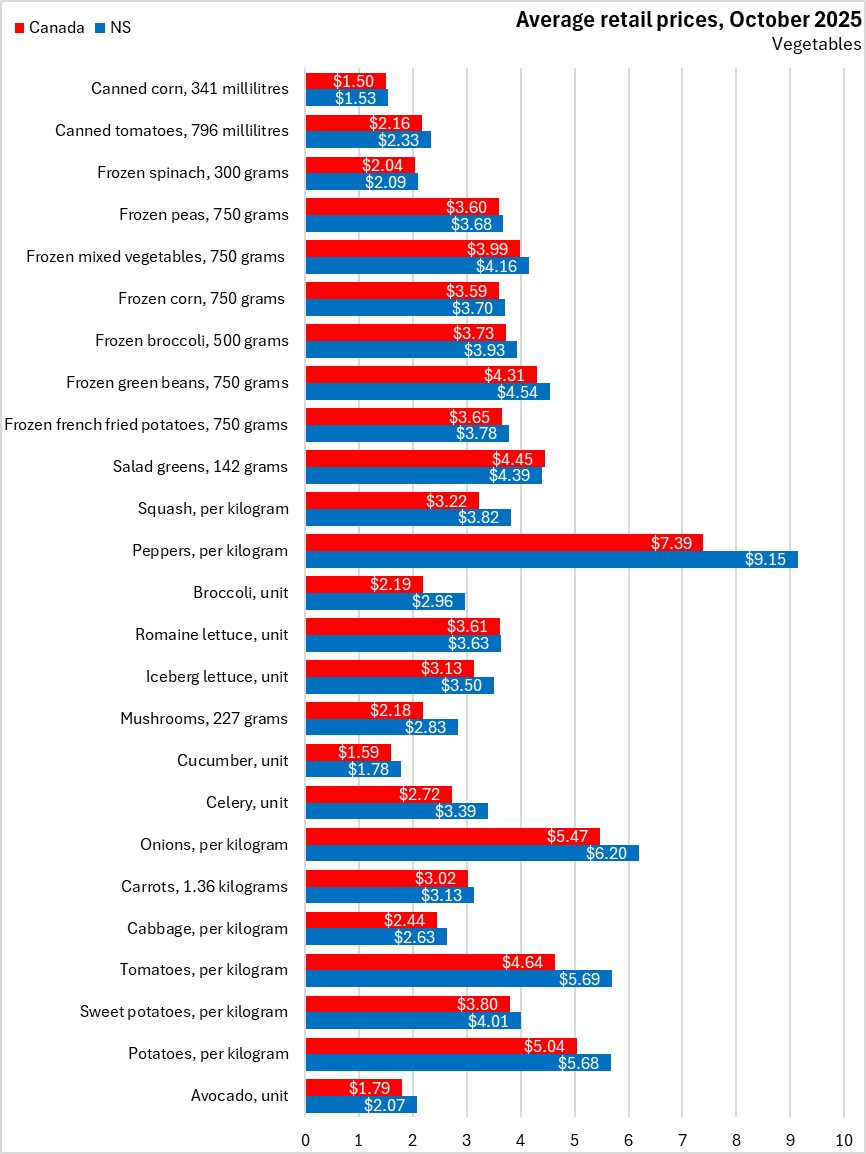
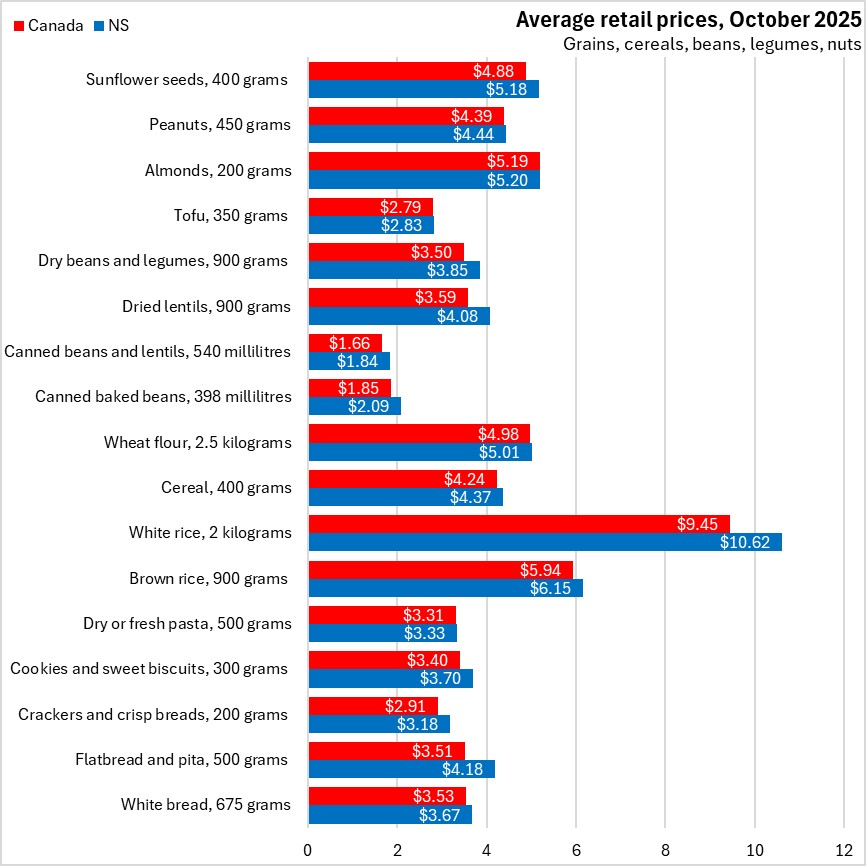
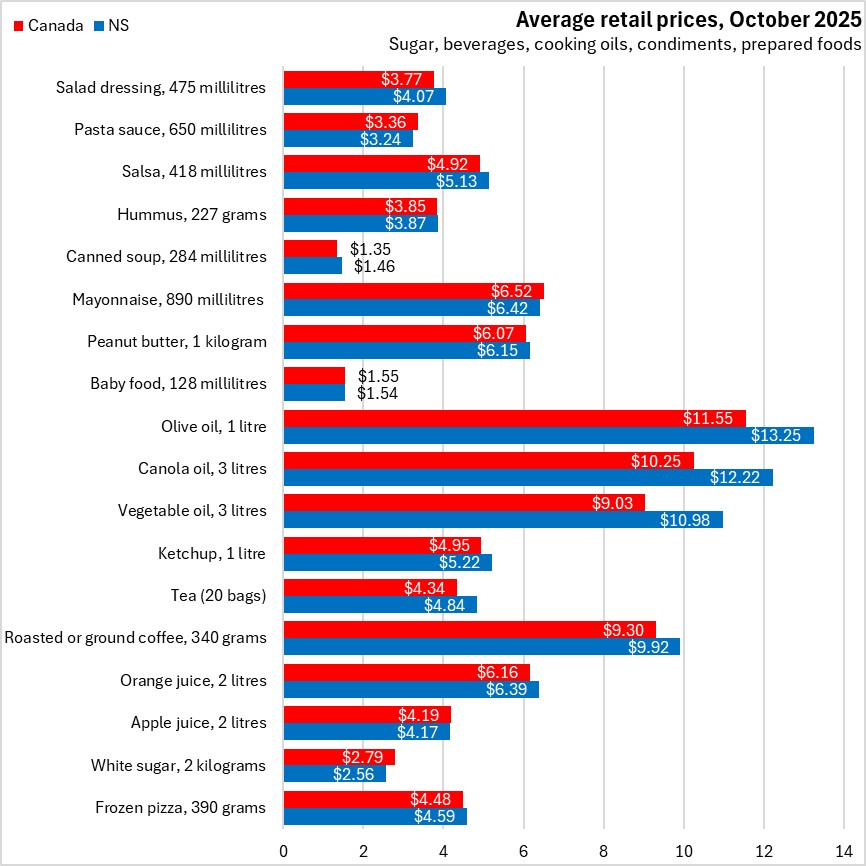

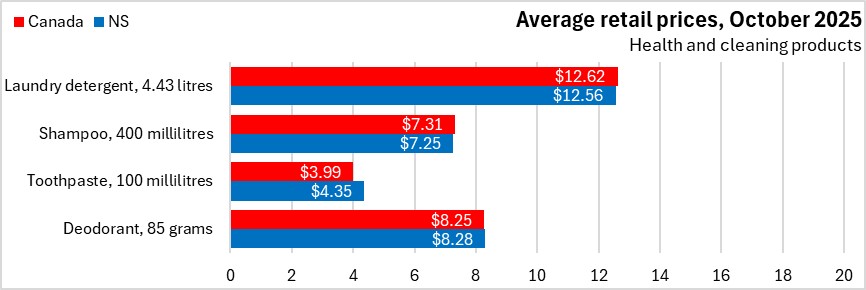
Notes: Statistics Canada makes available scanner data on prices collected for a range of food and personal care items. These prices are collected through point-of-sale (transaction) data obtained directly from Canadian retailers. The data represent commonly purchased items (which do change over time), but are not representative of the Consumer Price Index weights. Over time, products are rotated and quantity or quality October change. Comparisons of prices from one time period to another reflect quantity and quality changes as well as price changes.
For the purposes of this analysis, the 110 items reported by Statistics Canada will be grouped into:
- Meat, fish, poultry and meat substitutes
- Dairy, eggs and substitute products
- Fruit (including canned and frozen products)
- Vegetables (including canned and frozen products)
- Grains, cereals, beans, legumes and nuts
- Sugar, juices, cooking oils, condiments and prepared foods
- Health and cleaning products
Source: Statistics Canada. Table 18-10-0245-01 Monthly average retail prices for selected products; Table 18-10-0004-01 Consumer Price Index, monthly, not seasonally adjusted; Table 14-10-0063-01 Employee wages by industry, monthly, unadjusted for seasonality
|